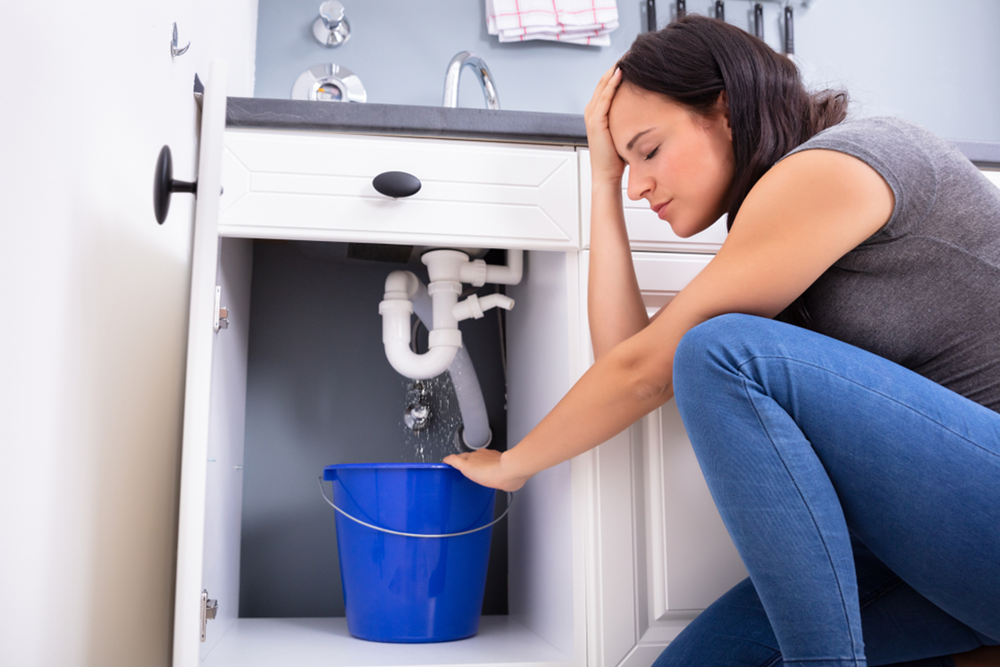Verified Solutions for Fixing a Dripping Garbage Disposal
Verified Solutions for Fixing a Dripping Garbage Disposal
Blog Article
The author is making a few great annotation relating to Tips on Fixing a Leaking Garbage Disposal in general in the article beneath.

Waste disposal unit are crucial cooking area home appliances that help in disposing of food waste efficiently. However, a leaking waste disposal unit can be a frustrating and untidy issue to deal with. Thankfully, numerous leakages can be taken care of quickly with a couple of easy steps. In this article, we will discuss exactly how to take care of a dripping waste disposal unit successfully.
Introduction
Garbage disposals are set up under kitchen area sinks and are developed to shred food waste into smaller items, enabling it to travel through the plumbing system easily. While these tools are usually trustworthy, leakages can happen in time due to damage, loosened links, or damage to the system.
Usual Causes of Leaks in Trash Disposals
Worn Seals and Gaskets
Seals and gaskets play an essential function in preventing water from dripping out of the garbage disposal. Gradually, these parts can deteriorate, leading to leaks around the disposal device.
Loose Links
The links between the garbage disposal and the plumbing system can come to be loose in time, triggering water to leak out throughout procedure.
Splits or Openings in the Disposal System
Physical damage to the waste disposal unit, such as splits or openings in the housing, can also cause leakages.
Recognizing the Source of the Leakage
Before attempting to repair a leaking garbage disposal, it is necessary to identify the resource of the leakage. This can usually be done via aesthetic assessment or by carrying out easy examinations.
Visual Evaluation
Evaluate the garbage disposal system meticulously for any type of signs of water leakage. Pay very close attention to areas around seals, gaskets, and link factors.
Testing for Leakages
One means to check for leaks is by running water with the disposal system and checking for any kind of noticeable indications of leakage.
Devices and Products Needed for Fixing a Leaking Garbage Disposal
Before beginning the fixing procedure, gather the required tools and materials, including a screwdriver, adjustable wrench, plumbing's putty, substitute seals or gaskets, and epoxy or patching material for fixing cracks or holes.
Step-by-Step Overview to Repairing a Leaking Waste Disposal Unit
Turn Off the Power
Before trying any fixings, guarantee that the power to the waste disposal unit unit is shut off to prevent the danger of electrical shock.
Situate the Leak
Recognize the specific area of the leakage and establish the cause.
Tighten up Connections
Utilize a wrench to tighten up any kind of loose links between the disposal unit and the plumbing system.
Change Seals or Gaskets
If the leak is because of worn seals or gaskets, eliminate the old parts and replace them with brand-new ones.
Patching Cracks or Holes
For fractures or openings in the disposal device, use epoxy or a suitable patching product to seal the broken area.
Examining the Garbage Disposal After Repair
When the fixing is full, evaluate the waste disposal unit by running water through it to make sure that the leak has actually been dealt with.
Preventive Upkeep Tips to Stay Clear Of Future Leakages
To avoid future leakages, it is necessary to execute normal maintenance on your garbage disposal. This includes maintaining it tidy, staying clear of placing non-food things or difficult things down the disposal, and regularly looking for leaks or other issues.
Final thought
In conclusion, fixing a dripping waste disposal unit is a fairly simple procedure that can be finished with basic tools and products. By following the steps detailed in this short article and practicing preventive maintenance, you can keep your garbage disposal in good working condition and prevent expensive repair work in the future.
HERE’S HOW TO FIX YOUR GARBAGE DISPOSAL
WHAT TO DO IF SOMETHING IS STUCK IN YOUR GARBAGE DISPOSAL
If the impeller won’t turn, there’s probably something stuck in the disposal. It could be a steak bone or peach pit, although plumbers report pulling all sorts of inappropriate objects out of disposals, such as bottle caps or aluminum foil. Make sure power to the disposal is off, and look inside to see if you can see the source of the jam.
Never stick your fingers in a disposal. Pull out anything you see with tongs or pliers.
If the disposal still won’t work, it may be time to call a plumber or consider buying a new disposal. GEM Plumbing & Heating is here for all of your garbage disposal needs.
WHAT TO DO IF YOUR GARBAGE DISPOSAL DRAIN IS CLOGGED
Take everything out from underneath your sink and put a bucket or other container under your disposal to catch any water that drains out. Disconnect your disposal from the power supply. If it’s plugged into a wall outlet, unplug it. If it’s hardwired into an electrical box, go to the electrical panel and turn off the breaker for the disposal. Pour ¼ cup of baking soda into the drain, followed by ½ cup of white vinegar. Give the solution a few minutes to fizz and do its work. Look into the disposal with a flashlight to see if you can see an object that might be causing the clog. If you see it, remove it using tongs or pliers. MORE TIPS ON DEALING WITH A CLOGGED GARBAGE DISPOSAL
Never use drain cleaner in a garbage disposal. It can damage the plastic parts inside the disposal. You can also be splashed with the caustic liquid while working to clear the clog. Beware! Never stick your fingers into a garbage disposal. Trust us — not a good idea. In many instances, your dishwasher drains through your garbage disposal. This allows the disposal to grind any large food particles that may be drained out of your dishwasher. There are some jurisdictions, however, where the plumbing code prohibits such a connection. WHAT TO DO WHEN YOUR DISHWASHER DRAINS THROUGH THE DISPOSAL
Run some water in the sink so your plunger has at least a ½-inch of water to create a seal and plunge vigorously up and down several times. You may need to repeat this several times. Run hot water down the drain to clear any residue that remains.

Do you really like more info about Why Is ? Try leaving feedback below. We would be interested to see your opinion about this review. Hoping to see you back again later on. Enjoyed our entry? Please share it. Let other people discover it. I praise you for your time. Don't forget to check up our website back soon.
Call Today Report this page